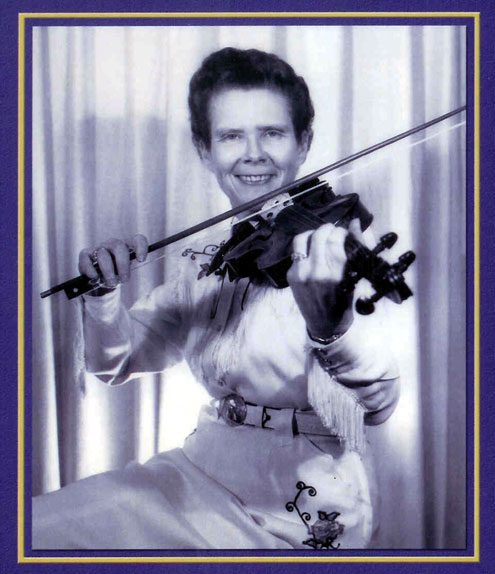For the last week of Women’s History Month, we thought we’d delve into the women of folk music. First up, Fiddlers!
Throughout the history of fiddling society has, more often than not, restricted women fiddlers from public appreciation. Thankfully that has been changing and today’s stages are more welcoming and inclusive than ever.
Do you recognize these women?
Bridget Kenny (1855-1915) “The Queen of the Fiddlers”
Christina Sheridan (1892-1972) Daughter of Bridget Kenny (Daughter, Terese Nulty [1930-2003] was also a fiddler.)
Lucy Farr (1911-2003)
Julia Clifford (1914-1997)
Ruby Nell Allmond (1923-2006)
Vivian Tomlinson-Williams (1938-2023)
In addition to the above legends and pioneers, there are many more women throughout history who inspired and taught many men fiddlers. One such woman, Rilla Mae Wallin Ray (1886-1978), was a fiddler, dancer, and singer in Madison County, NC. According to the Blue Ridge National Heritage Area’s Traditional Artist Directory, Rilla’s son Byard Ray, who once taught fiddle here at Warren Wilson College, “…first learned to fiddle by sneaking his parent’s (in this case his mother’s) instrument away when no one was looking, and sawing at it until he learned to “tease a tune out,” as he said. By the time older family members decided that Byard was ready for his first fiddle lesson, he already knew a great deal more than they realized. ”
Listen here to a recording from Warren Wilson College’s archives of Byard talking about learning the fiddle.
We asked our Fiddle Week Coordinator, Andrew Finn Magill, to name a woman fiddler who not only has inspired him, but who belongs in the category of ‘legends and pioneers’. His answer: “Liz Carroll: Grammy-nominee, composer extraordinaire, fiddle camp legend, and music icon Liz Carroll is perhaps the single greatest force of Irish music in America in the last few decades. She has been an inspiration to generations of fiddlers in not just Irish but many other genres, including the fiddler who coordinates Fiddle Week :)”
Liz Carroll has been a treasured instructor at The Swannanoa Gathering. Listen here to a set of tunes that fiddlers Liz Carroll and Kimberly Frasier joined in on late one evening here at the Gathering. You can also listen to a 2012 National Endowment for the Arts podcast interview with Liz here.
Speaking of Gathering Instructors, our 2024 season features these fantastic women fiddlers (in order of appearance in our catalog):
Natalya Weinstein
Sara Caswell
Emma McDowell
Libby Weitnauer
Katie Glassman
Jenna Moynihan
Mari Black
Caitlin Warbelow
Erynn Marshall
Tessa McCoy
Gina Dilg
Meredith McIntosh
More on women fiddlers
https://journalofmusic.com/focus/it-time-separate-irish-traditional-music-irishness
Trad Nation: Gender, Sexuality, and Race in Irish Traditional Music, Tes Slominski; published May, 2020
Jeanie: “…he needed another fiddle player. He asked me but I said that I wouldn’t really feel comfortable. Women didn’t really play instruments, even then. So I said, “Could Ken and I do it together and we’ll share the money?” It was 25 dollars a night..”
Vic: That seems so strange that even in the 1970s women would not play in bands. It would not have been the same here. There were plenty of women that I can think of playing in folk dance bands in the 1970s.
Jeanie: “And this guy was really staring at me one night and he said, “Are you really playing that fiddle?” This was in French and I said, “Oh no! I’m not really playing it, the tape recorder inside it is playing it for me.” And turned to his friends and said, “You see, I told you so!” The women would sing ballads. When we were there we would meet quite a few of them who did that, but it wasn’t considered lady-like, appropriate, for a woman to sit in a bar and play.”
Kimberly Ann Clark 03.25.2024




